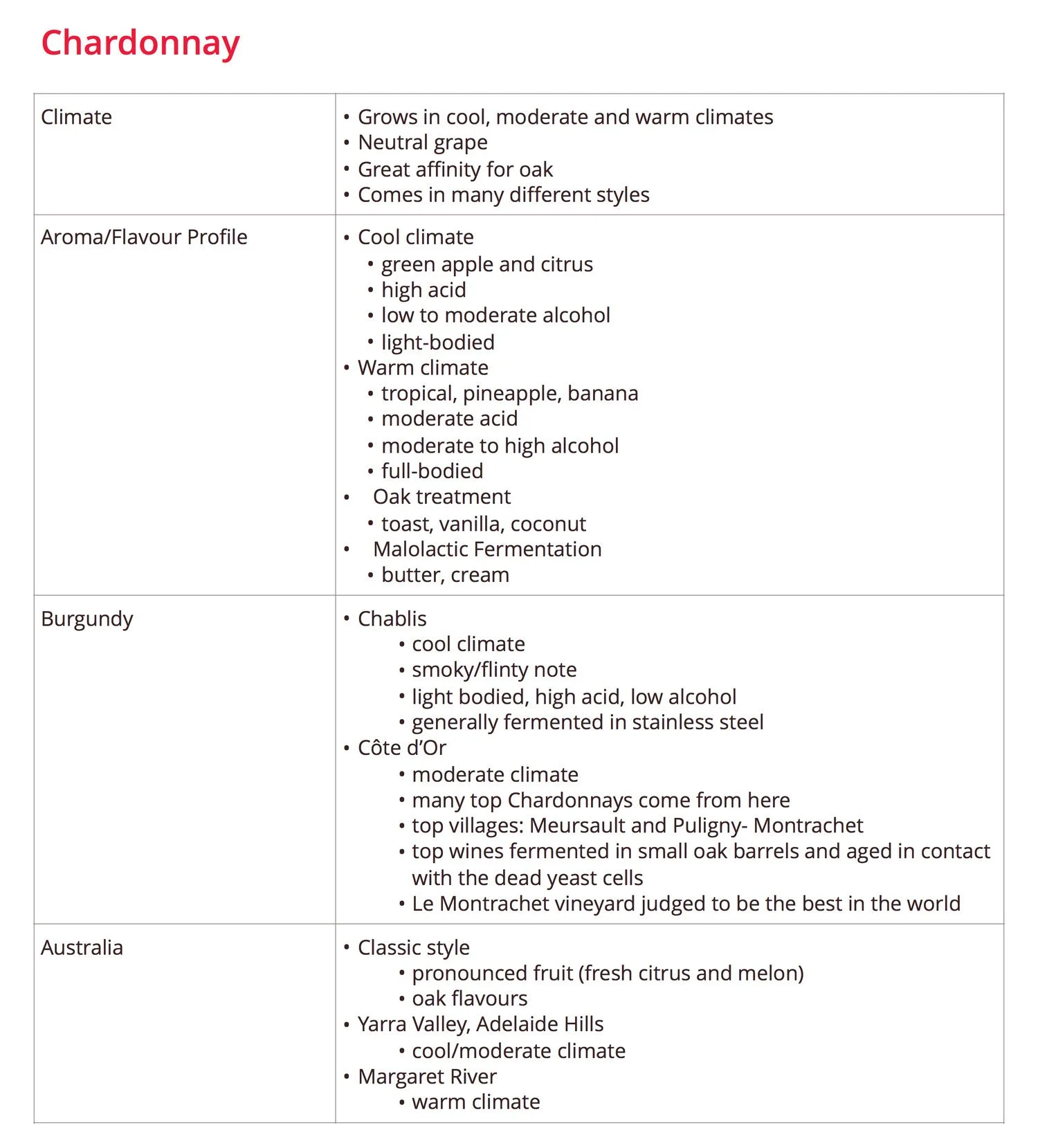
Theory and Wine Tasting
WSET Level 2 Award in Wines
At the conclusion of this program, you will be familiar with the main grape varietals, the styles of wine that they make, and the main regions where they are grown. You will be able to decipher wine labels and understand what's inside the bottle. You will also know the basics of grape growing and winemaking. Lastly, you will have know about the main types of spirits and their production.
Everyone has different study techniques. Below is a chart that is very useful as a study aide. You can have similar tables for all topics in that is covered in the program. This table is not complete. It is simply meant to illustrate the process.
Theory
Sample Multiple Choice Questions
1. Why are there very few vineyards lying closer to the equator than 30 degrees?
a. It is too windy
b. It is generally too hot
c. There is not enough sunlight
d. It is generally too cold
2. Which of the following varieties is often used in South Africa for inexpensive unoaked white wines?
a. Malbec
b. Chenin Blanc
c. Shiraz
d. Trebbiano
3. The word sur lie on a bottle of Muscadet indicates that...
a. It has been made without synthetic pesticides or herbicides
b. It has been aged in oak
c. It is a sweet wine
d. It has been bottled directly of the dead yeast
4. Which variety is often used for local rosé wines in Spain and Southern France?
a. Grenache
b. Chardonnay
c. Sangiovese
d. Zinfandel
5. Which of the following is true of column stills?
a. They only produce neutral high-strength spirits
b. They only produce relatively low-strength, harsh spirits
c. They may produce spirits with a range of strengths and styles
d. They are the oldest kind of still
Answers: 1-B, 2-B, 3-D, 4-A, 5-C
Wine Tasting and Tasting Notes
While there is no tasting portion on the final exam, it is important that you become comfortable with the WSET Level 2 Systematic Approach to Tasting (SAT). The SAT is designed to build individuals' skills progressively through the different qualification levels. At this level, you will be producing a basic tasting note.
This template can be used for any wine. Notice how the tasting note follows the SAT exactly. The more often you write the full note, the easier it will become!
Template for tasting note
This wine is ________ and of ________ ________ colour. On the nose, the wine is clean with ________ intensity. It has aromas of ________. On the palate, the wine is ________ and has ________ acidity, ________ tannin, ________ and is ________-bodied. It has ________ flavours of ________. The finish is ________. This wine is of ________ quality.
Notice that every factor has been addressed. You can't get a mark if you don't write something down!
Based on this note, is this a wine you would like to drink?
Completed tasting note
This wine is clear and of medium ruby colour. On the nose, the wine is clean with pronounced intensity. It has aromas of blackberry, violet, baked fruit and vanilla. On the palate, the wine is dry and has medium acidity, medium tannins, high alcohol and is full-bodied. It has pronounced flavour intensity with flavours of blackberry, prune, violet and vanilla. The finish is long. This wine is of outstanding quality.


